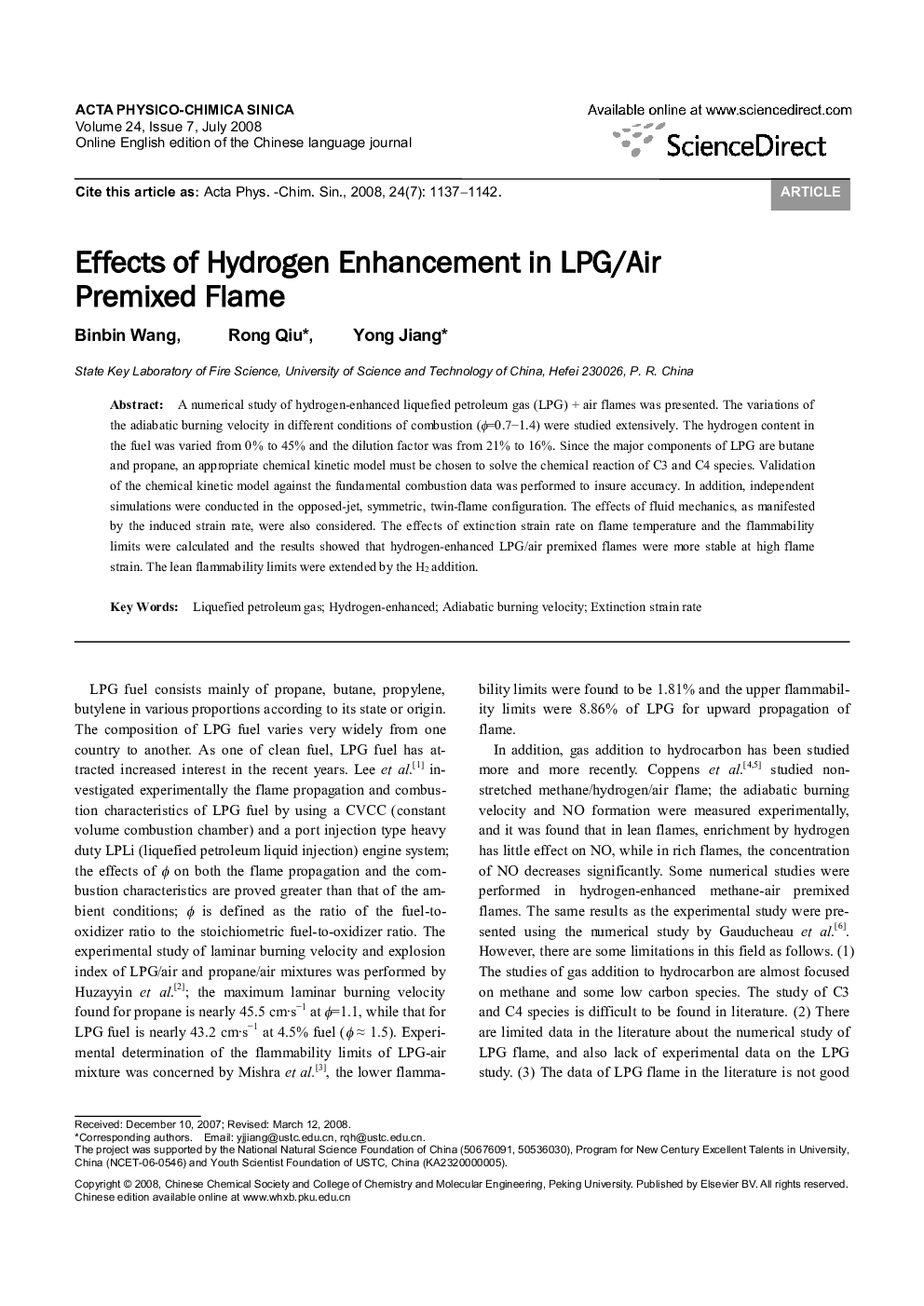| Article ID | Journal | Published Year | Pages | File Type |
|---|---|---|---|---|
| 7831687 | Acta Physico-Chimica Sinica | 2008 | 6 Pages |
Abstract
A numerical study of hydrogen-enhanced liquefied petroleum gas (LPG) + air flames was presented. The variations of the adiabatic burning velocity in different conditions of combustion (Ï=0.7-1.4) were studied extensively. The hydrogen content in the fuel was varied from 0% to 45% and the dilution factor was from 21% to 16%. Since the major components of LPG are butane and propane, an appropriate chemical kinetic model must be chosen to solve the chemical reaction of C3 and C4 species. Validation of the chemical kinetic model against the fundamental combustion data was performed to insure accuracy. In addition, independent simulations were conducted in the opposed-jet, symmetric, twin-flame configuration. The effects of fluid mechanics, as manifested by the induced strain rate, were also considered. The effects of extinction strain rate on flame temperature and the flammability limits were calculated and the results showed that hydrogen-enhanced LPG/air premixed flames were more stable at high flame strain. The lean flammability limits were extended by the H2 addition.
Related Topics
Physical Sciences and Engineering
Chemistry
Physical and Theoretical Chemistry
Authors
Binbin Wang, Rong Qiu, Yong Jiang,
